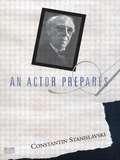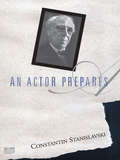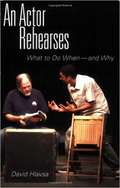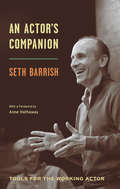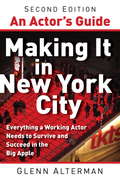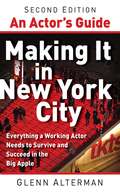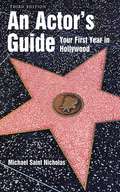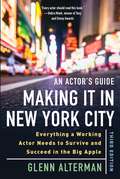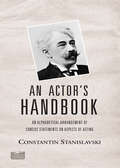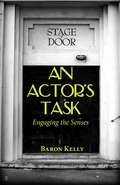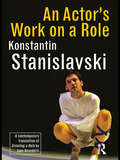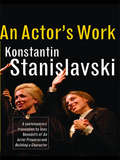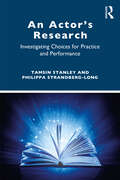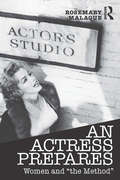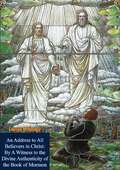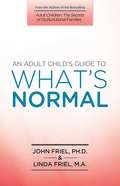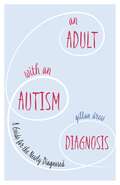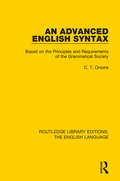- Table View
- List View
An Activist Approach: Confidential Role Assignment for Fultons Department Stores
by Guhan Subramanian Kaitlyn SzydlowskiA three party, multiple-issue negotiation exercise dealing with a potential merger between two leading department stores, called for by an activist investor hedge fund in a letter to both companies. Company management will now attempt to navigate next moves, which are complicated by weak takeover defenses of their corporate boards, hedge fund ownership stake within both companies, and potential anti-trust risk. Meanwhile, the third party, the activist hedge fund, is turning up the heat in planning their next move.
An Activist Approach: Confidential Role Assignment for Remingtons Housewares
by Guhan Subramanian Kaitlyn SzydlowskiA three party, multiple-issue negotiation exercise dealing with a potential merger between two leading department stores, called for by an activist investor hedge fund in a letter to both companies. Company management will now attempt to navigate next moves, which are complicated by weak takeover defenses of their corporate boards, hedge fund ownership stake within both companies, and potential anti-trust risk. Meanwhile, the third party, the activist hedge fund, is turning up the heat in planning their next move.
An Actor Prepares
by Constantin StanislavskiThe first volume of Stanislavski's enduring trilogy on the art of acting defines the "System", a means of mastering the craft of acting and of stimulating the actor's individual creativeness and imagination.
An Actor Prepares (Bloomsbury Revelations Ser.)
by Constantin StanislavskiStanislavski's simple exercises fire the imagination, and help readers not only discover their own conception of reality but how to reproduce it as well.
An Actor Rehearses: What to Do When and Why
by David HlavsaWith a commonsense approach, An Actor Rehearses takes performers through the rehearsal process and explains exactly what to do when. The actor’s process is explained simply, sequentially, and in detail, starting from the period before rehearsals begin and continuing through first read-through, blocking rehearsals, technical rehearsals, and performances. Packed with exercises that are useful in the classroom and in the rehearsal studio, An Actor Rehearses is an indispensable guide to the rehearsal process that makes building a character easier and more rewarding for both actor and audience. And because author David Hlavsa’s emphasis is on relating acting to life, performers learn to make a remarkable connection between becoming a better actor and becoming a better person: more compassionate, more vital, more alive. Clear, practical, usable advice for actors at every level Unique focus: learning to become a better actor means learning to become a better person Huge potential audienceAllworth Press, an imprint of Skyhorse Publishing, publishes a broad range of books on the visual and performing arts, with emphasis on the business of art. Our titles cover subjects such as graphic design, theater, branding, fine art, photography, interior design, writing, acting, film, how to start careers, business and legal forms, business practices, and more. While we don't aspire to publish a New York Times bestseller or a national bestseller, we are deeply committed to quality books that help creative professionals succeed and thrive. We often publish in areas overlooked by other publishers and welcome the author whose expertise can help our audience of readers.
An Actor Survives: Remarks on Stanislavsky (Routledge Advances in Theatre & Performance Studies)
by Tomasz KubikowskiThis book focuses on the analysis and interpretation of the first volume of the book An Actor’s Work by Konstantin Stanislavsky. This volume is the only part of his planned major work on theatre art that he was able to finish and authorise before his death. Its highly edited variant has long been known as ‘An Actor Prepares’ in the English-speaking world. Tomasz Kubikowski explores Stanislavsky’s material not only as a handbook of acting but also as a philosophical testament of Stanislavsky, in which he attempts to contain his most essential experiences and reflections. This book explores the underlying theme of ‘survival’ in its various meanings, from professional to existential; and the mechanisms and actions we attempt to survive. This study will be of great interest to students and scholars in theatre and performance studies.
An Actor's Companion
by Seth Barrish Anne Hathaway"I was totally unprepared for the transformation that Seth's technique created in me. . . . I realized that what I thought I knew about acting up to that point was largely misguided . . . but I now had a great, talented, dedicated teacher who generously wanted to share his tools with everyone. There is muscularity, not to mention wisdom and truth to Seth's techniques. He is a wonderful teacher, and I know that having him as my first guide is one of the luckiest things to have happened to me in my career and life. And when I can't get back to class with him, I am so grateful I have this book to turn to."--Anne Hathaway"This book is truly unlike anything else I know--these pieces are haikus on specific elements of performance and character building."--Philip Himberg, executive director, Sundance Theatre InstituteA collection of practical acting tips, tools, and exercises, An Actor's Companion is ideal for both the seasoned professionals and actors-in-training. The tips--all simple, direct, and useful--are easy to understand and even easier to apply, in both rehearsal and in performance.Seth Barrish is an actor, teacher, and the co-artistic director of The Barrow Group in New York City. In his thirty-year career, he has directed the award-winning shows My Girlfriend's Boyfriend (Lucille Lortel Award for Best Solo Show, Drama Desk and Outer Critics Circle nominations for Best Solo Show), Sleepwalk With Me (Nightlife Award for Outstanding Comedian in a Major Performance), The Tricky Part (Obie Award, Drama Desk nominations for Best Play and Best Solo Show), Pentecost (Drama Desk nomination for Best Play), Old Wicked Songs (Los Angeles Drama Critics Circle Award and Garland Award for Best Direction), and Good (Straw Hat Award for Best Direction), among dozens of others.
An Actor's Guide--Making It in New York City (Second Edition)
by Glenn AltermanFor any actor in or on the way to New York City, this is the definitive source for advice, winning strategies, marketing techniques, and invaluable insights to being a successful New York actor. This new edition has been completely revised and updatedto cover the significant changes in the New York theater landscape over the last nine years. This indispensable guide has also been expanded to include dozens of new interviews with top New York City actors and a completely improved Internet chapterequipped with the most up-to-date tools to thrive in the industry. Aspiring and established professionals will find this thorough and up-to-the-minute volume chock full of resources and advice about auditioning, making professional connections, promoting one's self, seeking opportunities in nontraditional venues, finding an apartment, securing "survival jobs," understanding actor unions, getting headshots, and furthering one's actor training in New York. This guide also details working as a film extra, careers in print modeling, scams and rip-offs to avoid, opportunities for actors with disabilities, and using the Internet to the fullest advantage. Included are in-depth interviews with legendary show business figures such as actor Henry Winkler, casting director Juliet Taylor, and theater director Joseph Chaikin as well as top talents from the fields of film, television, stage, commercials,and talent agencies. Written by a professional New York actor with over thirty years of experience, this meticulously researched guide will give actors the tools they need to survive and thrive in New York show business.
An Actor's Guide--Making It in New York City: Everything a Working Actor Needs to Survive and Succeed in the Big Apple
by Glenn AltermanFor any actor in or on the way to New York City, this is the definitive source for advice, winning strategies, marketing techniques, and invaluable insights to being a successful New York actor. This new edition has been completely revised and updated to cover the significant changes in the New York theater landscape over the last nine years. This indispensable guide has also been expanded to include dozens of new interviews with top New York City actors and a completely improved Internet chapter equipped with the most up-to-date tools to thrive in the industry. Aspiring and established professionals will find this thorough and up-to-the-minute volume chock full of resources and advice about auditioning, making professional connections, promoting one's self, seeking opportunities in nontraditional venues, finding an apartment, securing "survival jobs," understanding actor unions, getting headshots, and furthering one's actor training in New York. This guide also details working as a film extra, careers in print modeling, scams and rip-offs to avoid, opportunities for actors with disabilities, and using the Internet to the fullest advantage. Included are in-depth interviews with legendary show business figures such as actor Henry Winkler, casting director Juliet Taylor, and theater director Joseph Chaikin as well as top talents from the fields of film, television, stage, commercials, and talent agencies. Written by a professional New York actor with over thirty years of experience, this meticulously researched guide will give actors the tools they need to survive and thrive in New York show business.
An Actor's Guide--Your First Year in Hollywood: Your First Year In Hollywood
by Michael St. NicolasAn Actor's Guide-Your First Year in Hollywood should be required reading for any young actor headed to La-La Land with a dream in his heart and a shine on his shoes. Sure, it's a great guide to auditioning, getting a SAG card, finding an agent, landing parts, gaining exposure, and creating publicity-but it's also packed with real-world advice from a fellow actor. Getting to know Los Angeles, finding a place to live and a job to pay the bills. An Actor's Guide presents the whole picture, for career and for daily life. Remember to thank us when you're a big star!
An Actor's Guide—Making It in New York City, Third Edition: Everything a Working Actor Needs to Survive and Succeed in the Big Apple
by Glenn AltermanA Step-by-Step Guide for the Actor Pursuing a Career in New York A great deal has changed in the industry in the last decade. In this new, third edition of An Actor&’s Guide—Making It in New York City, Glenn Alterman provides everything actors need to know. You&’ll discover the ten things that it takes to make it as a successful actor in the city, how to support yourself, where and how to start your life as a New York actor, understanding and marketing &“your brand,&” the best acting schools and conservatories, effective ways to contact agents and casting directors, and more. The author, a successful working actor, also shares many insider tips on topics such as: how to network effectivelyheadshots, photographers, and how to have a successful photo sessioncreating your actor websitesthe best Internet resources and casting siteshow to give winning auditions and interviewsfinding and developing great monologuesoff and off-off Broadway opportunitiesTV and film opportunitiesvoice-overscommercial print modelingcommercialssurvival jobsappropriate behavior in the businessscams and rip-offs to avoidinformation for actors with disabilitiesinformation on diversity and LGBTQ concernsa listing of agents, casting directors and theaters Among the book&’s many interviews are legendary show business figures, such as actors Henry Winkler, Alison Fraser, Dylan Baker, Lisa Emery, and Charles Busch, as well as casting directors Juliet Taylor, Ellen Lewis, Jay Binder, Donna DeSeta, and Liz Lewis, among many others. With Alterman&’s essential guide, you&’ll be prepared to launch and maintain your dream career in the city that never sleeps.
An Actor's Handbook: An Alphabetical Arrangement of Concise Statements on Aspects of Acting, Reissue of first edition
by Elizabeth Reynolds Hapgood Constantin StanislavskiThis is the classic lexicon of Stanislavski's most important concepts, all in the master's own words. Upon its publication in 1963, An Actor's Handbook quickly established itself as an essential guide for actors and directors. Culling key passages from Stanislavski's vast output, this book covers more than one hundred and fifty key concepts, among them 'Improvisation', 'External Technique', 'Magic If', 'Imaginary Objects', 'Discipline', 'What Is My System?' and 'Stage Fright'.This reissued, attractively packaged edition will be an essential book for any performer.
An Actor's Task: Engaging the Senses
by Baron KellyAn Actor's Task provides a framework for studying the dual arts of acting: inhabiting a character both physically and psychologically. Actors at all levels can use this book to explore, develop, and review the sensory tools and training that enable them to be the best versions of themselves and, ultimately, to bring that understanding of "self" to their art. Innovative new exercises and selected classics--updated for today's students--comprise more than 100 exercises. Introductions to each exercise explain its aims and benefits. Clear step-by-step prompts provide guidance. Debriefing sections engage actors in reflection on what they have experienced and learned. This inspired text is equally suited to classroom use and individual study.
An Actor's Work on a Role
by Konstantin StanislavskiAn Actor’s Work on a Role is Konstantin Stanislavski’s exploration of the rehearsal process, applying the techniques of his seminal actor training system to the task of bringing truth to one’s chosen role. Originally published over half a century ago as Creating a Role, this book was the third in a planned trilogy – after An Actor Prepares and Building a Character, now combined in An Actor’s Work – in which Stanislavski sets out his psychological, physical and practical vision of actor training. This new translation from renowned scholar Jean Benedetti not only includes Stanislavski’s original teachings, but is also furnished with invaluable supplementary material in the shape of transcripts and notes from the rehearsals themselves, reconfirming 'The System' as the cornerstone of actor training.
An Actor's Work: A Student's Diary
by Konstantin StanislavskiStanislavski’s ‘system’ has dominated actor-training in the West since his writings were first translated into English in the 1920s and 30s. His systematic attempt to outline a psycho-physical technique for acting single-handedly revolutionized standards of acting in the theatre. Until now, readers and students have had to contend with inaccurate, misleading and difficult-to-read English-language versions. Some of the mistranslations have resulted in profound distortions in the way his system has been interpreted and taught. At last, Jean Benedetti has succeeded in translating Stanislavski’s huge manual into a lively, fascinating and accurate text in English. He has remained faithful to the author's original intentions, putting the two books previously known as An Actor Prepares and Building A Character back together into one volume, and in a colloquial and readable style for today's actors. The result is a major contribution to the theatre, and a service to one of the great innovators of the twentieth century.
An Actor's Work: A Student's Diary (Routledge Classics)
by Konstantin StanislavskiStanislavski’s ‘system’ has dominated actor-training in the West since his writings were first translated into English in the 1920s and 30s. His systematic attempt to outline a psycho-physical technique for acting single-handedly revolutionized standards of acting in the theatre. Until now, readers and students have had to contend with inaccurate, misleading and difficult-to-read English-language versions. Some of the mistranslations have resulted in profound distortions in the way his system has been interpreted and taught. At last, Jean Benedetti has succeeded in translating Stanislavski’s huge manual into a lively, fascinating and accurate text in English. He has remained faithful to the author's original intentions, putting the two books previously known as An Actor Prepares and Building A Character back together into one volume, and in a colloquial and readable style for today's actors. The result is a major contribution to the theatre, and a service to one of the great innovators of the twentieth century. This Routledge Classics edition includes a new Foreword by the director Richard Eyre.
An Actor’s Research: Investigating Choices for Practice and Performance
by Tamsin Stanley Philippa Strandberg-LongAn Actor’s Research: Investigating Choices for Practice and Performance presents an accessible and highly practical guide to the research approaches required of the actor. It aims to establish the precision and rigour of the actor’s craft that is intrinsic to a compelling acting performance, explore a range of research activities surrounding and emerging from practical work in the studio, and enable the actor to evolve a multifaceted skillset in researching for performance. The chapters focus on different research areas such as the self, character, relationships, circumstance, and context, providing accessible and practical guidance to developing a personal research practice. Each aspect is explained and engaged with as practice, rather than study – offering helpful hints and advising against common pitfalls – ultimately enabling the actor to locate the necessary knowledge to shape and inform their performance in both text-based and devised scenarios. Additionally, as the actor’s self is a personal instrument that is drawn on in terms of expression, impulses, and imagination; the self also becomes a source for creative appraisal and research. This book therefore offers comprehensive advice and strategies for self-evaluation and reflection, connecting research investigation with self-exploration in making expressive performance choices, making it a practice highly applicable to the actor’s needs. An Actor’s Research closely follows the training actor’s needs in terms of performance-based research; however, its practical research activities for text and character creation and strategies for the development of critical thinking and self-reflective skills support the ongoing development of the actor and their craft in both training and professional circumstances.
An Actress Prepares: Women and "the Method"
by Rosemary Malague'Every day, thousands of women enter acting classes where most of them will receive some variation on the Stanislavsky-based training that has now been taught in the U.S. for nearly ninety years. Yet relatively little feminist consideration has been given to the experience of the student actress: What happens to women in Method actor training?' An Actress Prepares is the first book to interrogate Method acting from a specifically feminist perspective. Rose Malague addresses "the Method" not only with much-needed critical distance, but also the crucial insider's view of a trained actor. Case studies examine the preeminent American teachers who popularized and transformed elements of Stanislavsky’s System within the U.S.—Strasberg, Adler, Meisner, and Hagen— by analyzing and comparing their related but distinctly different approaches. This book confronts the sexism that still exists in actor training and exposes the gender biases embedded within the Method itself. Its in-depth examination of these Stanislavskian techniques seeks to reclaim Method acting from its patriarchal practices and to empower women who act. 'I've been waiting for someone to write this book for years: a thorough-going analysis and reconsideration of American approaches to Stanislavsky from a feminist perspective ... lively, intelligent, and engaging.' – Phillip Zarrilli, University of Exeter 'Theatre people of any gender will be transformed by Rose Malague’s eye-opening study An Actress Prepares... This book will be useful to all scholars and practitioners determined to make gender equity central to how they hone their craft and their thinking.' – Jill Dolan, Princeton University
An Address in Paris: Emplacement, Bureaucracy, and Belonging in Hostels for West African Migrants (Black Lives in the Diaspora: Past / Present / Future)
by Aïssatou Mbodj-PouyeAfter West African migrants arrived in France in the 1960s, the authorities opened residences for them known as “foyers.” Initially intended to contain the West African population, these hostels for single men fostered the emergence of Black communities in the heart of Paris and other cities. More recently, however, a nationwide renovation program sought to replace the collective living arrangements of foyers with more individualized spaces by constructing new buildings or drastically reshaping existing ones—and casting the West African presence as a threat to French identity.Aïssatou Mbodj-Pouye examines the changing roles that foyers have played in the lives of generations of West African migrants, weaving together rich ethnographic description with a critical historical account. She shows how migrants settled in foyers through kinship ties, making these buildings key parts of diasporic networks. Migrants also forged a sense of place in foyers, in an intricate relationship with bureaucratic requirements such as having an address. Mbodj-Pouye scrutinizes the physical and social evolution of foyers and the administrative dynamics that governed them. She argues that even though these buildings originated in state attempts to manage migrants along racial lines, the shared way of life that they encouraged helped spark a sense of political agency and belonging whose significance extends far beyond their walls.Combining close attention to the social and cultural meanings of the foyers and keenly observed portraits of Black experiences in France across decades, An Address in Paris offers a new lens on the global African diaspora.
An Address to All Believers in Christ: By A Witness To The Divine Authenticity Of The Book Of Mormon
by David WhitmerDavid Whitmer was selected by Joseph Smith to be one of only three special witnesses to the Book of Mormon. Because most of the book was produced in David’s own house, he was an eye-witness to the translation process itself, and to the early history the Latter Day Saint movement.Later in life, David compiled this Address to All Believers, honestly critiquing actions of Joseph Smith and the early church. The reflections and honesty of an older man bring us priceless information on Joseph Smith and the early history of his movement. But it must be noted that Whitmer maintained his testimony of the Book of Mormon to death. That fact alone commands attention to the information and insights he provides.-Print ed.
An Adult Child's Guide to What's Normal: Being Functional In A Dysfunctional World
by John Friel Linda D. FrielYou have begun to deal with the pain and trauma of being raised in a dysfunctional family and now you are ready to lead a healthy life. But: Do you know what healthy people do? Do you know what is “normal”? Do you know how to ask unwanted guests to leave?In An Adult Child’s Guide to What’s “Normal”, John and Linda Friel have written a practical guide to living a healthy life. Your parents may not have been able to teach you social skills but it is not too late to learn them now. Read this guide and learn how to respond to the challenges, problems and traps that we are faced with daily.
An Adult with an Autism Diagnosis: A Guide for the Newly Diagnosed
by Gillan DrewBeing diagnosed with autism as an adult can be disorienting and isolating; however, if you can understand the condition and how it affects perceptions, relationships, and your relationship with the world in general, a happy and successful life is attainable. Through an introduction to the autism spectrum, and how the Level 1 diagnosis is characterised, the author draws on personal experiences to provide positive advice on dealing with life, health, and relationships following an adult diagnosis. The effect of autism on social skills is described with tips for dealing with family and personal relationships, parenting, living arrangements, and employment. Important topics include disclosure, available resources, and options for different therapeutic routes. On reading this book, you will learn a lot more about the autism spectrum at Level 1, be able to separate the facts from the myths, and gain an appreciation of the strengths of autism, and how autism can affect many aspects of everyday life. Drawing from the author's lived experience, this book is an essential guide for all newly diagnosed adults on the autism spectrum, their families and friends, and all professionals new to working with adults with ASDs.
An Adult with an Autism Diagnosis: A Guide for the Newly Diagnosed
by Gillan DrewBeing diagnosed with autism as an adult can be disorienting and isolating; however, if you can understand the condition and how it affects perceptions, relationships, and your relationship with the world in general, a happy and successful life is attainable. Through an introduction to the autism spectrum, and how the Level 1 diagnosis is characterised, the author draws on personal experiences to provide positive advice on dealing with life, health, and relationships following an adult diagnosis. The effect of autism on social skills is described with tips for dealing with family and personal relationships, parenting, living arrangements, and employment. Important topics include disclosure, available resources, and options for different therapeutic routes. On reading this book, you will learn a lot more about the autism spectrum at Level 1, be able to separate the facts from the myths, and gain an appreciation of the strengths of autism, and how autism can affect many aspects of everyday life. Drawing from the author's lived experience, this book is an essential guide for all newly diagnosed adults on the autism spectrum, their families and friends, and all professionals new to working with adults with ASDs.
An Advanced Course in Computational Nuclear Physics: Bridging the Scales from Quarks to Neutron Stars (Lecture Notes in Physics #936)
by Morten Hjorth-Jensen Maria Paola Lombardo Ubirajara Van KolckThis graduate-level text collects and synthesizes a series of ten lectures on the nuclear quantum many-body problem. Starting from our current understanding of the underlying forces, it presents recent advances within the field of lattice quantum chromodynamics before going on to discuss effective field theories, central many-body methods like Monte Carlo methods, coupled cluster theories, the similarity renormalization group approach, Green's function methods and large-scale diagonalization approaches. Algorithmic and computational advances show particular promise for breakthroughs in predictive power, including proper error estimates, a better understanding of the underlying effective degrees of freedom and of the respective forces at play. Enabled by recent improvements in theoretical, experimental and numerical techniques, the state-of-the art applications considered in this volume span the entire range, from our smallest components - quarks and gluons as the mediators of the strong force - to the computation of the equation of state for neutron star matter. The lectures presented provide an in-depth exposition of the underlying theoretical and algorithmic approaches as well details of the numerical implementation of the methods discussed. Several also include links to numerical software and benchmark calculations, which readers can use to develop their own programs for tackling challenging nuclear many-body problems.
An Advanced English Syntax: Based on the Principles and Requirements of the Grammatical Society (Routledge Library Editions: The English Language #20)
by C. T. OnionsThis book, first published in 1970, is the reissue of the sixth edition of C. T. Onions’ standard introductory text-book, based on the principles and requirements of the Grammatical Society. The Introduction is designed to provide a full scheme of sentence analysis. The rest of the book is arranged in two parts: Part I offers a treatment of syntactical phenomena based on the analysis of sentences, while Part II classifies the use of forms. This book will be of interest to students of English language and linguistics.

